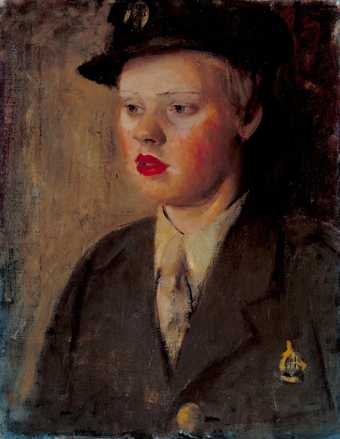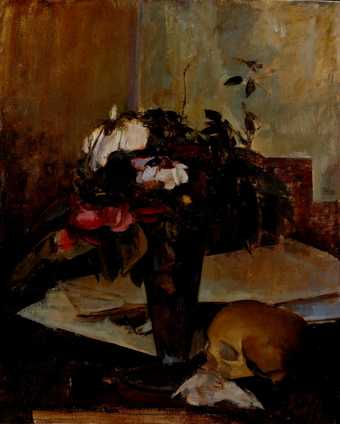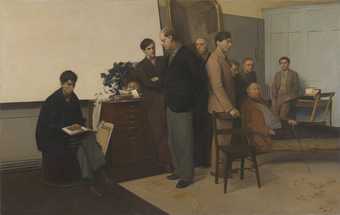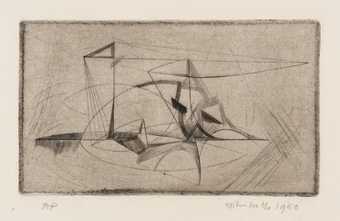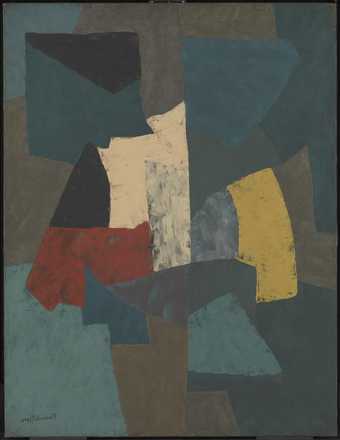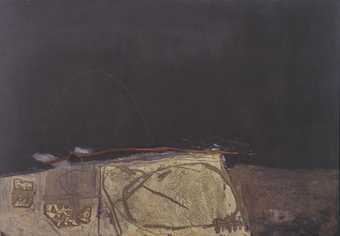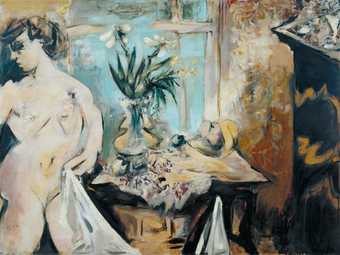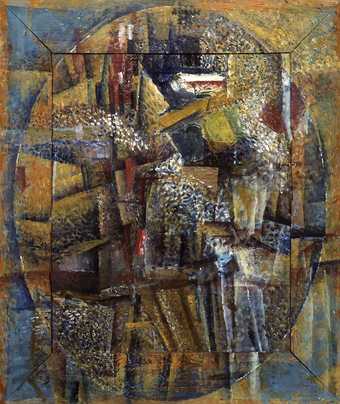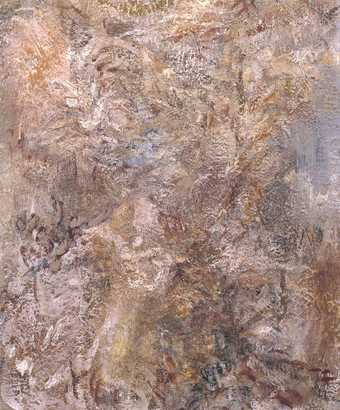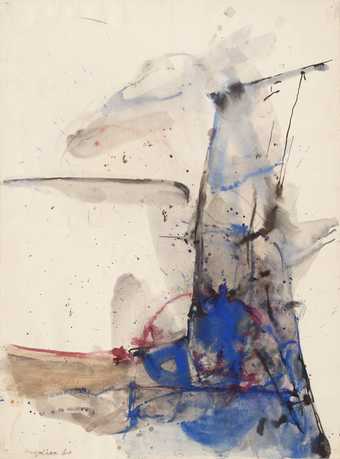
Not on display
- Artist
- Rodrigo Moynihan 1910–1990
- Medium
- Oil paint on canvas
- Dimensions
- Support: 457 × 356 mm
frame: 555 × 454 × 75 mm - Collection
- Tate
- Acquisition
- Purchased 1958
- Reference
- T00172
Display caption
Between 1933 and 1936 several artists later associated with the Euston Road School produced almost or totally abstract paintings executed in a free painterly manner. Along with Tibble and Graham Bell, Moynihan produced the most abstract of these. This example is from Objective Abstraction's middle phase, when definite marks and longer strokes had given way to denser textures. In his words: 'the gradual thickening of the paint was ... a kind of build-up as a result of correction and suggestion'. He was 'continually aware of the lung movement of paint, its ability to breathe and move upon the surface of the canvas'.
Gallery label, August 2004
Does this text contain inaccurate information or language that you feel we should improve or change? We would like to hear from you.
Catalogue entry
T00172 OBJECTIVE ABSTRACTION c. 1935–6
Not inscribed.
Canvas, 18×14 (46×35·5).
Purchased from the artist (Knapping Fund) 1958.
Exh: London Group, November 1936 (146), as ‘Painting’.
Moynihan exhibited a number of non-representational works between 1934 and 1937, all with the title ‘Painting’ or ‘Drawing’; that this is the work shown in 1936 is confirmed by an old photograph of the painting in a frame bearing the number ‘146’. This photograph also shows that the work was partly repainted after that time; there were originally more sharply defined contrasts of tone with dark areas in the centre and, more clearly than at present, in the lower corners. Much of the picture was painted in its frame, even before the 1936 exhibition, as is shown by the edge of the canvas.
The title here given to the painting is taken from the name chosen for the exhibition of Objective Abstractions at the Zwemmer Gallery, March–April 1934, at which Moynihan, together with Geoffrey Tibble and Graham Bell, first showed works of this nature (Thomas Carr, Ivon Hitchens, Victor Pasmore and Ceri Richards also had works in the exhibition, but these were all more or less representational).
According to a detailed account of the movement based on contemporary diaries and kindly supplied by William Townsend, Geoffrey Tibble was the first of the group to paint completely non-representational works, in about September 1933, and was soon followed by Moynihan and Edgar Hubert who were working in the same direction; Graham Bell began to work in the same style, very much under Tibble's influence, a bit later, probably early in 1934, and his interest was short-lived. Tibble and Moynihan moved away from non-representational painting in the winter of 1936–7, while Hubert developed a more geometric formalist style.
Mr Townsend distinguishes three phases in the development of Moynihan's and Tibble's non-representational work in the 1930s: the first was characterized by broad, loosely painted brush-strokes, as in the examples reproduced in the 1934 Zwemmer Gallery catalogue; after the exhibition this was replaced by a much more deliberate style, only a few paintings being worked on over a long period to produce a lighter and more even tone and a denser texture obscuring the individual brush-strokes; in 1936 there was a return to a more rapid looser technique. The Tate Gallery's picture belongs to the second phase and was probably begun in 1935, though not ready to exhibit at the London Group of October–November that year (its subsequent reworking has been mentioned above): it is similar in style both to a painting in the collection of W. W. Winkworth, which was purchased at the London Group exhibition of October–November 1935, and to the larger work, signed and dated 1936, still in the possession of the artist.
The catalogue of the 1934 exhibition at the Zwemmer Gallery includes the artists' answers to a number of questions. Moynihan, in reply to the question ‘Do you consider your paintings “impressionist”?’, states that they ‘have more in common with the impressionist technique whereby painting identifies itself with, and derives from, its means, than with a system in which the artist imposes upon the canvas a preconceived idea;... the evolution is intimately bound up with the canvas and medium’. William Townsend, in a letter to The Listener of 18 April 1934 which he wrote independently but which was approved by Geoffrey Tibble, defined the use of the word ‘Objective’: ‘the painting is to be regarded as having from the first touch that right to exist independently of the painter himself on which later it will depend for any significance it may have’.
Published in:
Mary Chamot, Dennis Farr and Martin Butlin, The Modern British Paintings, Drawings and Sculpture, London 1964, II
Explore
- abstraction(8,615)
-
- non-representational(6,161)
-
- gestural(891)
You might like
-
Rodrigo Moynihan Private Clarke, A.T.S.
1943 -
Rodrigo Moynihan Still Life with Skull
1945 -
Rodrigo Moynihan Portrait Group
1951 -
John Wells Abstraction
1950 -
Jean-Paul Riopelle Perspectives
1956 -
Rodrigo Moynihan Yellow and Violet
1957 -
Serge Poliakoff Abstract Composition
1954 -
Antoni Tapies Grey and Green Painting
1957 -
Austin Cooper Abstraction 199/62
1951–62 -
Rodrigo Moynihan Interior with a Nude and a Still Life
1937 -
Ian Stephenson Sideboard Abstraction
1957 -
Rodrigo Moynihan Painting
1935 -
Edgar Hubert Painting
1935–6 -
Rodrigo Moynihan Study
c.1935 -
Rodrigo Moynihan Blue Drawing
1960

